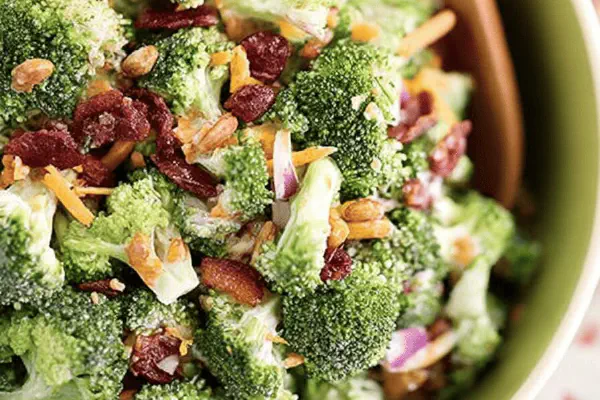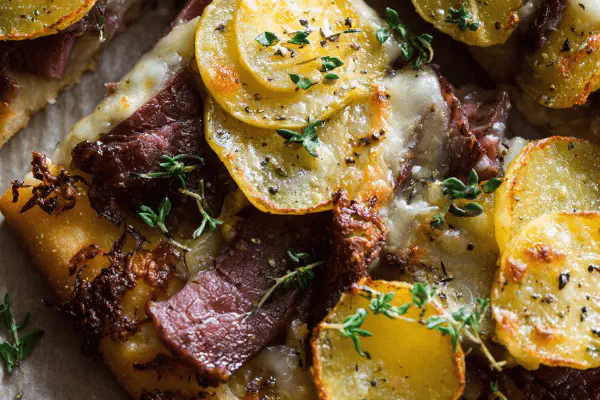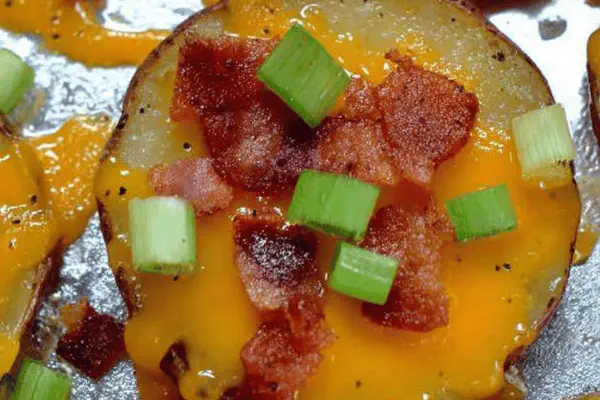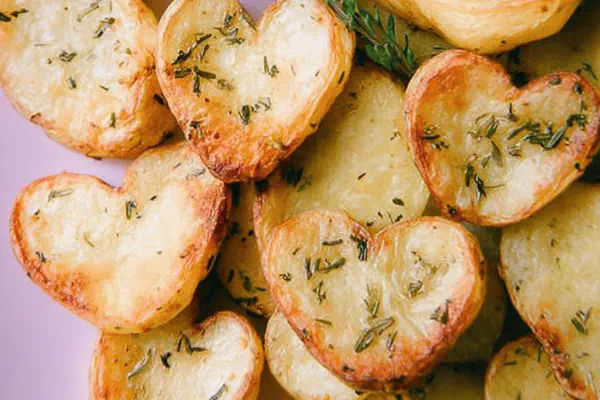Crispy Yukon Gold Fries
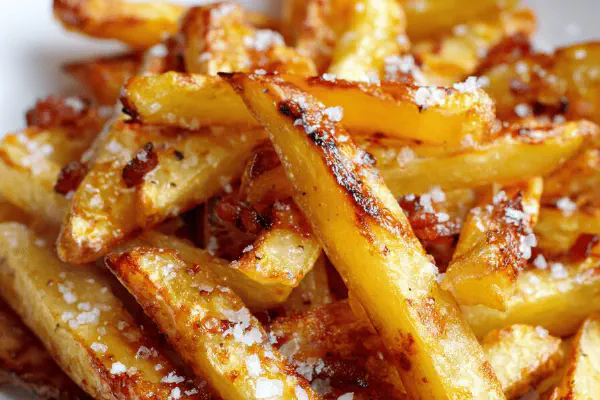
By Emma
Certified Culinary Professional
Ingredients
- 5 to 6 large Yukon Gold potatoes washed, peeled optional
- Grapeseed oil for frying, enough for deep fry safety
- 4 slices smoky pancetta, cut thick instead of bacon
About the ingredients
Method
- 1. Cut potatoes into sticks about 1.2 cm thick for chunky fries or 0.6 cm for thinner. Use a sharp knife or fry cutter to avoid crushed edges.
- 2. Soak cut fries in cold water at least 25 minutes or refrigerate up to 22 hours. This pulls out excess starch, preventing clumps and soggy fries. Don’t rush this step or fries will clump like glue against the oil.
- 3. Drain well, then pat dry with a clean kitchen towel. Very important to remove surface moisture or oil will splatter and fries won’t crisp up properly.
- 4. Heat grapeseed oil in a deep fryer or heavy pot to 192°C (about 378°F). Place fries in a fryer basket or carefully in oil cold so temperature rises gradually, keeping fries intact. Add pancetta slices at the same time to render fat and crisp them.
- 5. Raise heat to maintain 190-195°C (375-383°F). The oil will sputter as water evaporates, sounds like gentle crackling. Fry for roughly 38-43 minutes. Colour changes from pale to golden brown, fries puff slightly. Shake basket gently every 8-10 minutes to prevent sticking.
- 6. Remove fries when crispy, firm but tender inside. Pancetta crisp and browned. Drain on paper towels, season promptly with coarse salt. Warm serving plate to keep heat longer.
- 7. Serve immediately for maximum crispness. If holding, keep on a wire rack in a low oven (90-100°C), but fries will lose crunch fast.
- 8. Leftovers reheat best in a single layer on a hot skillet or oven, not microwave. Rest frying oil and strain for reuse.
Cooking tips
Chef's notes
- 💡 Cut potatoes with uniform thickness, about 1.2 cm for chunky fries or 0.6 cm for thinner sticks. Sharp knife or fry cutter key, prevents crushed edges that turn mushy. Starch release uneven if cuts vary; expect limp spots if too thin or thick variation.
- 💡 Soak fries minimum 20 minutes at cold temp, longer better up to 22 hours fridge if possible. Pulls starch, avoids gluey clumps. Never rush. Water temperature affects soak time; cold water recommended to keep texture intact.
- 💡 Dry fries thoroughly after soaking, pat well with kitchen towel. Moisture causes oil spatter and lowers crispiness. Residual water steams fries inside fryer, making them limp instead of crunchy. Prep time spent here saves cooking headaches.
- 💡 Start frying in cold oil, baskets or carefully dropped fries. Oil temp rises gradually, avoids burnt crusts with raw insides. If impatient, preheat oil then add fries in batches carefully. Pancetta added early to render fat slowly, crisps alongside fries, no grease overload.
- 💡 Fry at 190-195°C range, watch for gentle crackling from water evaporation, bubbling fades as fries dry. Color transitions pale yellow to golden brown. Basket shaking every 8-10 minutes prevents sticking and uneven cooking. Pancetta cooks faster, remove if darkening too much.
- 💡 Drain fries on paper towels or wire rack immediately after frying to avoid oil sogginess. Salt liberally on hot fries, salt sticks to oil sheen better now. Serving plate warmed keeps fries hot longer without steaming. Avoid stacking fries, trap steam loses crunch.
- 💡 Leftovers best reheated on hot skillet or oven in single layer; microwaves make fries rubbery. Reheat oil by straining and refrigerating after use; reuse but never scorched. Pancetta's smoky fat adds flavor, better and less greasy alternative to bacon.
- 💡 If substituting oils, grapeseed preferred for neutral taste and high smoke point. Canola is safe option but watch for unwanted odors. Avoid olive oil, lower smoke point burns and imparts off-flavors. Pancetta swaps include smoked turkey bacon or omit for vegetarian version.
Common questions
Why soak fries so long?
Starch removal key. Pulls out glue agents. Longer soak breaks more starch, stops fries sticking. Short soak risks clumping oils. Cold water best, warmer shortens times but hurts texture.
How to know when fries done?
Listen for crackling oil, water evaporates slowly. Color from pale yellow shifts golden brown. Fry texture firm outside, tender inside. Pancetta crisps faster, watch edges to pull early before burn.
Fries soggy after frying?
Probably wet fries before frying. Dry thoroughly. Oil too cool drops temp; fries soak oil not crisp. Overcrowding traps steam. Drain well on paper towels or wire racks. Salt hot fries immediately for crisp salt clings.
How store leftover fries?
Cool completely, keep in single layer if possible. Wire rack in fridge best to avoid moisture buildup. Reheat on hot skillet or oven, skip microwave for texture. Oil can be strained cooled, refrigerate for reuse, watch for burnt flavors.
